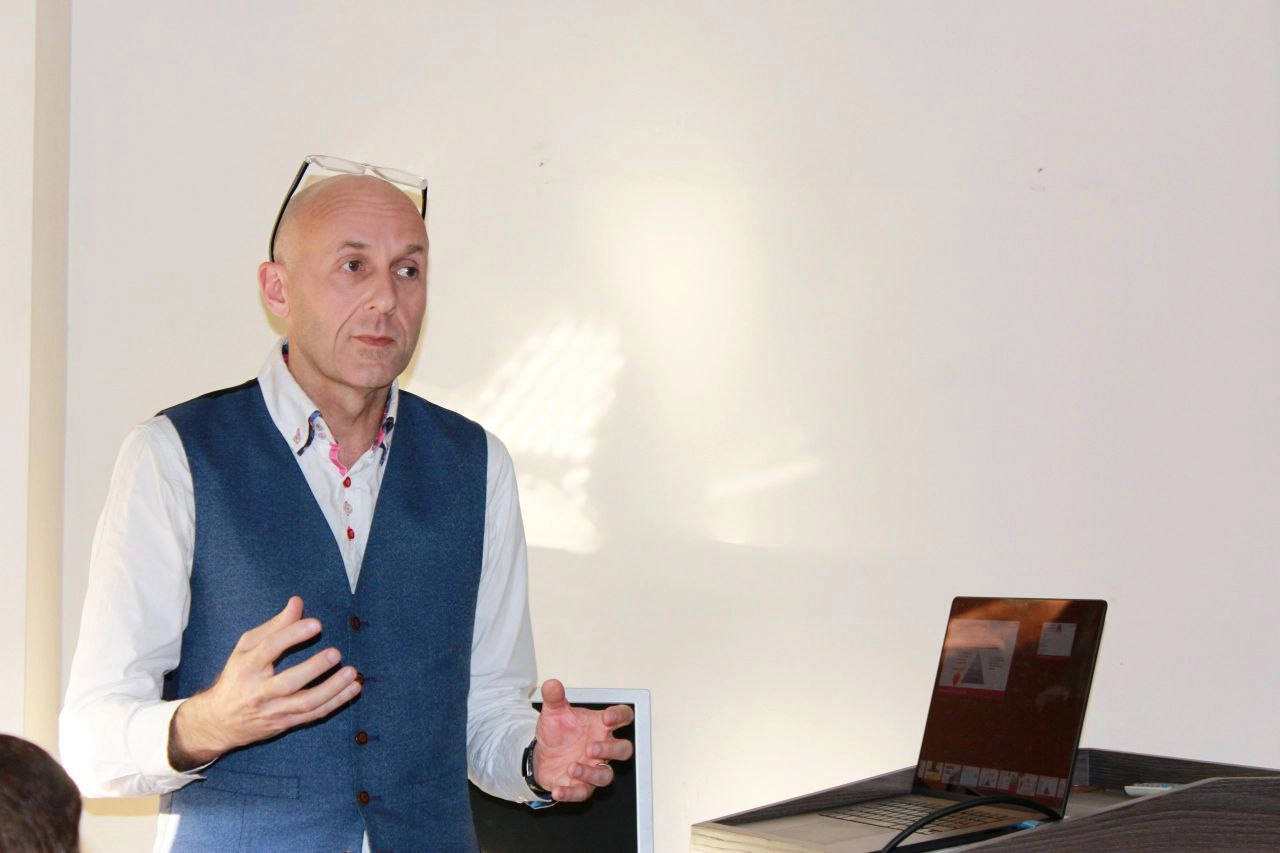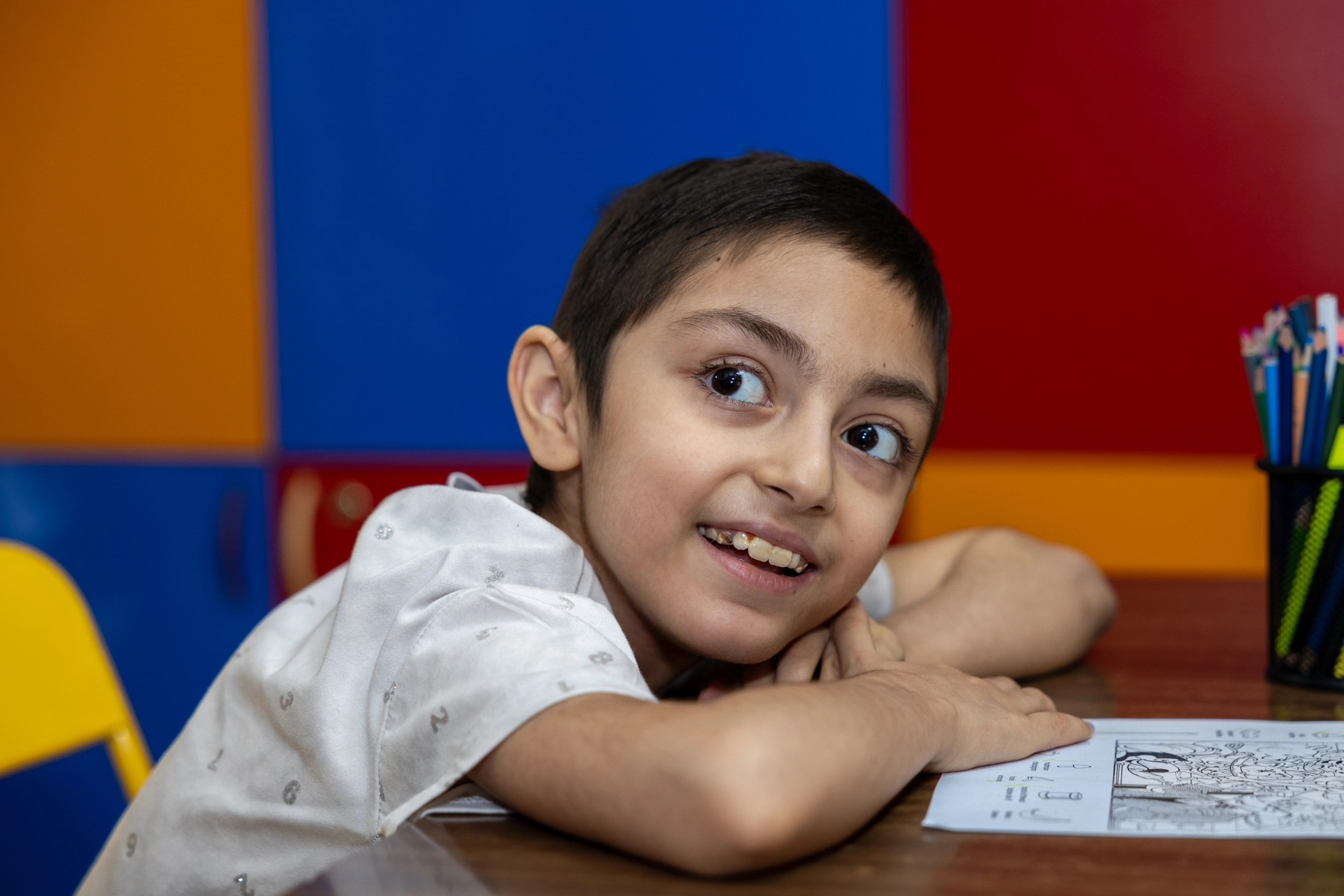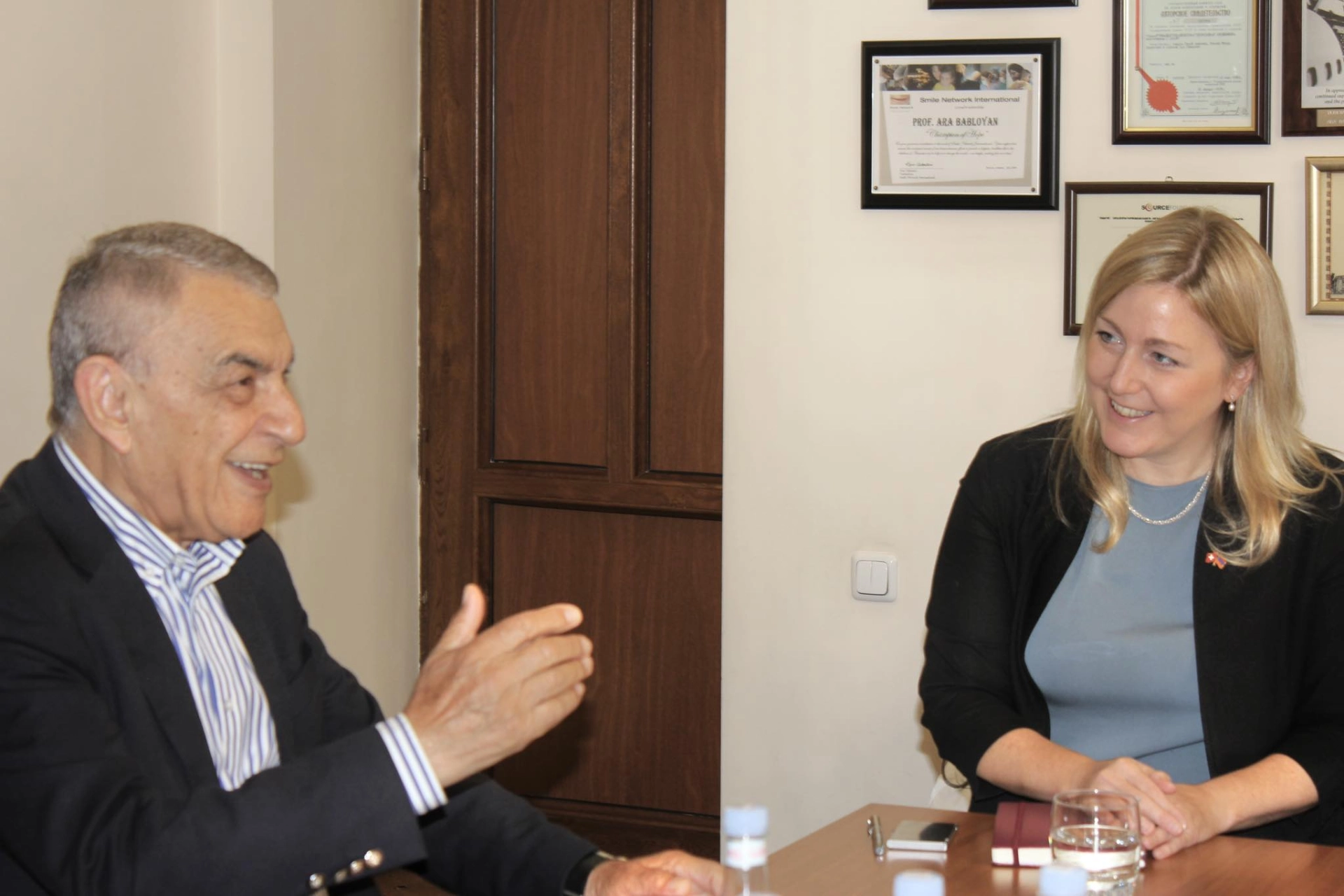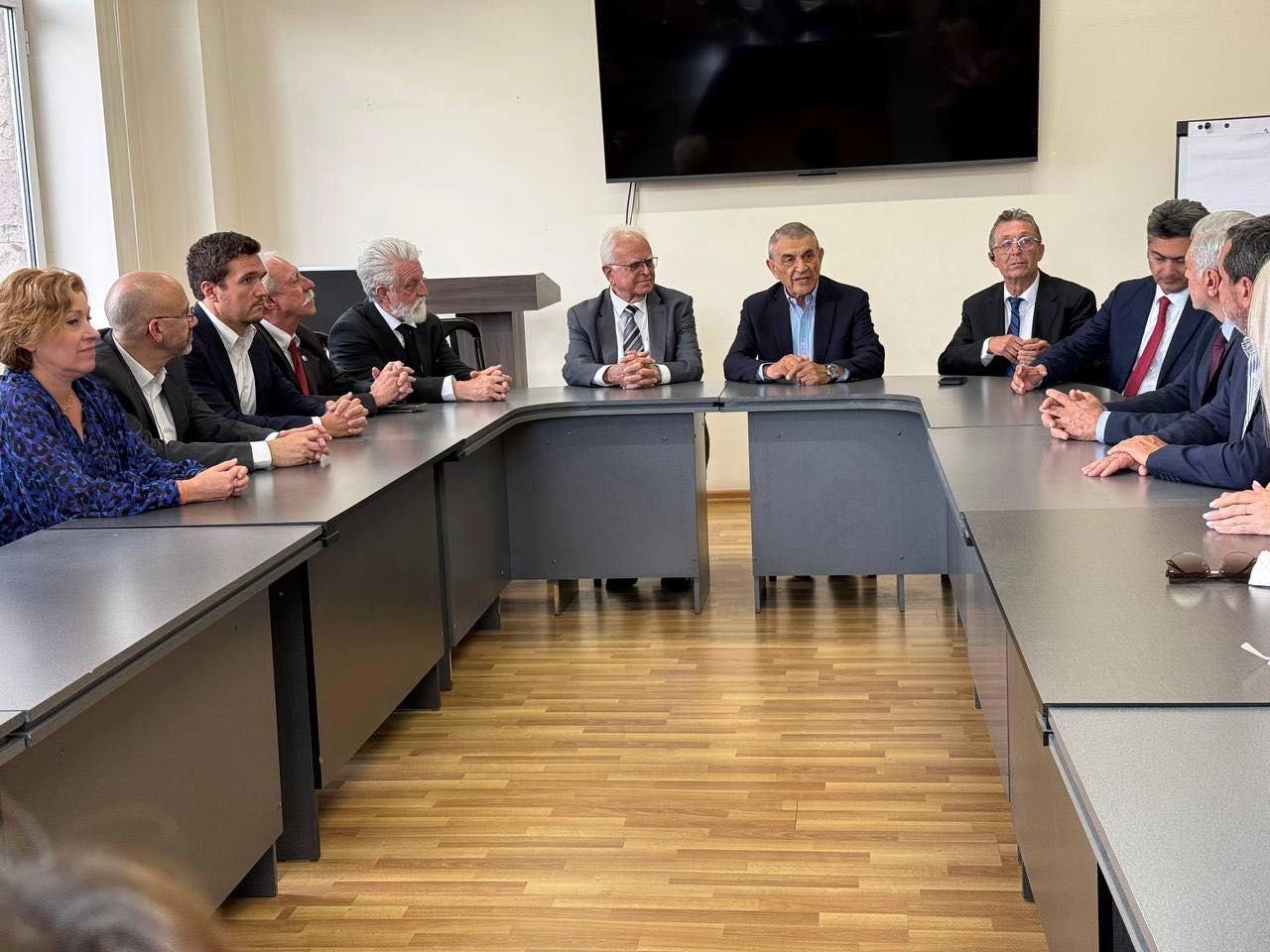This video from news.am discusses congenital clubfoot and hip joint dysplasia, the most common pathologies in pediatric orthopedics.
Vahe Yavryan, the head of the Orthopedics and Traumatology department of the “Arabkir” medical center, presents details about these conditions.
The two most common conditions in pediatric orthopedics are congenital clubfoot and hip joint dysplasia. According to statistics, the incidence of clubfoot is 1.5 in 1000 newborns. About 40 children are born with hip joint dysplasia, where the joint does not develop properly, and 2 are born with complete joint dislocation. In recent years, significant advancements have been made in the approaches to addressing these two problems, which help prevent disabilities in children.
Vahe Yavryan, the head of the Orthopedics and Traumatology department of the “Arabkir” medical center, explains that in the case of clubfoot, children used to undergo several surgeries, and 15 percent of them were disabled for the rest of their lives. However, everything changed in the 2000s when the Ponseti method was introduced. This method was brought to Armenia by Vahe Yavryan himself in 2012 after studying at Iowa University at the workplace of its author, Ignacio Ponseti, and then returning to the “Arabkir” medical center.
“The Ponseti method is a special casting technique that must be performed exactly as described. Its effectiveness has been proven through the treatment of millions of children with clubfoot. Following this, the second stage involves a subcutaneous tenotomy of the achilles tendon. This stage is necessary for 95 percent of children with clubfoot. Subsequently, the third stage requires children to wear braces. In Armenia, “Iowa” braces are used. While there are other types of braces available, the “Iowa” brace was designed by the University of Iowa. These three components of treatment are equally vital. In other words, it cannot be stated that minor surgery, casting or the brace is more important: the combination of these elements produces the result we have today,” says doctor Yavryan.
Thanks to this method, no child in Armenia has undergone complex surgery since 2012, and no child has suffered from disability due to clubfoot.
“Now we consider the sole, which not only rests on its entire surface but also retains its functionality and the range of movements in joints, as a significant treatment outcome. I always tell parents that if we adhere to the protocol, and if you want your child to play football, they can play football with that sole” he says.
Vahe Yavryan also points out that parents themselves can easily diagnose clubfoot: the sole cannot be straightened by hand.
“Congenital clubfoot is a 4-component deformity that cannot be corrected with simple hand movement. The problem lies in the connective tissue and, most of the time, in the shortness of ligaments, leading to the dislocation and subluxation of the bones that make up the sole. It is impossible to confuse this with positional problems, which may be present in the prenatal stage and can be easily corrected by hand. I typically tell my students that there’s no need for a doctor to diagnose clubfoot because it’s such a visible deformity that parents can notice after childbirth. If the deformity is fully corrected by hand, it means it’s not a congenital clubfoot” says the pediatric traumatologist.
The doctor presents a complex clinical case: recently, a 5-year-old child was admitted to the hospital who had not received any treatment for clubfoot.
“It was unusual for us that the child had not received any treatment before. Previously, it would have been difficult to imagine that a 5-year-old clubfoot could be treated with casting. However, as we are familiar with the literature and know that the Ponseti method is used not only for newborns, and there are articles about 10 year olds, so we decided to treat the child using this method. The child received 7 casts, after which we performed a subcutaneous tenotomy of the Achilles tendon and now the child is wearing orthosis. The results were satisfying. We have a sole that rests on the entire surface and is quite functional for a 5-year-old untreated case” he says.
And what are dysplasia and dislocation of the hip joint? The doctor mentions that there is a misunderstanding about the dislocation of the hip joint, as it is a result of birth. In reality, it is a congenital problem: dysplasia or underdevelopment of the joint, and the last stage being the dislocation.
“This has been a significant issue for orthopedics because the clinical examination and symptoms that we knew and still know, allowed us to diagnose the children who were born with joint dislocation and therefore, severely limited diagnosis those children who were born with dysplasia. In addition to clinical examination we had an alternative - X-ray, which did not allow us to make a diagnosis. From the 1960s-70s, sonographic examination of hip joints in newborns began to be applied and was eventually introduced by Austrian Professor Graf. Later it was accepted by the medical community as a proven diagnostic method and is now considered the gold standard of diagnosis” the specialist says.
Vahe Yavryan studied under Graf in Austria and then tested the method for a year in one of the maternity hospitals in Yerevan. After long-term collaboration with the Ministry of Health, ultrasound screening for hip joint issues was introduced in Armenia as part of the nationwide newborn screening program. Doctor Yavryan takes pride in noting that not all European countries have such screening programs. Thanks to the program, today in Armenia, children with disabilities caused by this problem are a rare occurrence.
“The method has very high accuracy, approximately 99.9 percent. It allows us to detect even the smallest underdeveloped hip joint and take appropriate measures so that the child receives treatment in a timely manner. In 2007, according to official data, every year in the Republic of Armenia, we had 20 children who became 1st degree disabled due to dislocation or developmental dislocation of the hip joint. This is why the disability rate in our country was the highest. When I was just starting, my teacher performed open surgeries on nearly 30 children. To understand the changes that the screening has brought to our country, I can say that last year, there were only 4 cases due to hip joint dislocation. There is a golden rule, according to which we have early and late diagnosis. Early diagnosis is made within the first 3 months of the problem. When we initiate the treatment at that time, we can determine if it’s dysplastic or dislocated, and the probability of achieving an anatomically good, functional joint is 98 percent throughout one’s entire life,” says Yavryan.
At the “Arabkir” medical center, parents are provided with a special information sheet that provides detailed guidance on caring for a child with hip joint dysplasia to prevent joint dislocation.

 English
English
 Հայերեն
Հայերեն Русский
Русский






